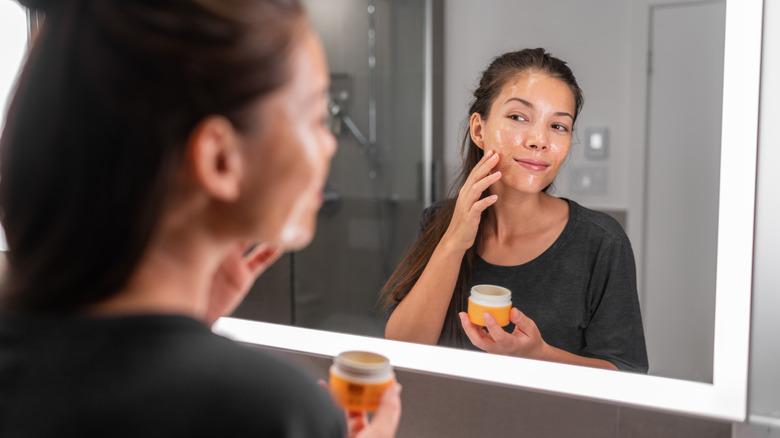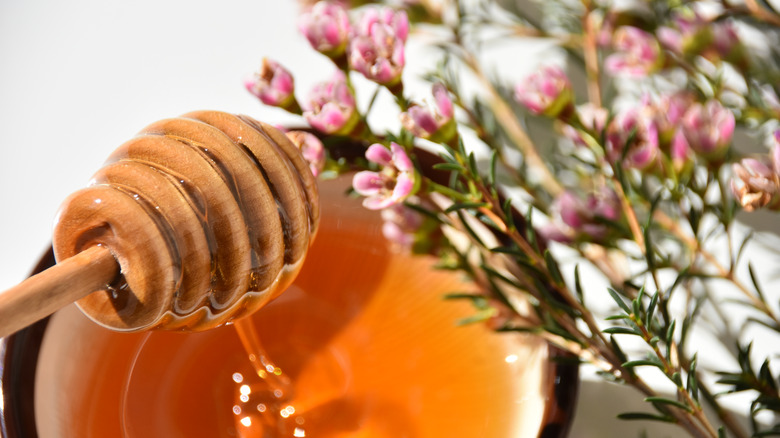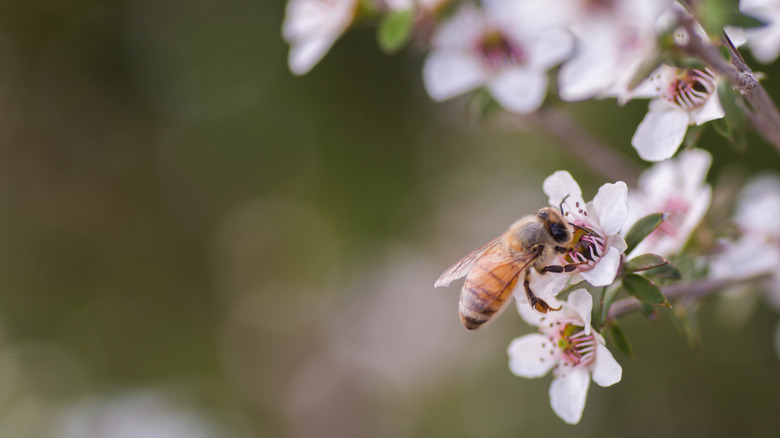The Holy Grail Skincare Ingredient Expert Says You Need In Your Routine
Honey has been used in healing for thousands of years. Sumerian clay tablets discovered in Iraq from around 2,000 B.C.E. include honey in a number of medicinal recipes, per Smithsonian Magazine. Sumerians weren't alone either. In ancient Egypt, honey was used to treat wounds and burns. Honey's beneficial effects on the skin were taken advantage of by women in ancient China; they combined it with orange seeds to combat blemishes, per Herb & Hedgerow. Cleopatra allegedly added honey to her milk baths as a beauty treatment, according to The New York Times. If using honey was good enough for Cleopatra, it's got to be good.
There's a reason that honey has been used throughout the centuries for skincare, but not all honey is created equal. Colleen Poe, Founder and Formulator of skincare line Apo.Ge, designed the products to be good for your skin and good for the planet (their packaging is plastic-free). Poe spoke exclusively with The List about the benefits of one of their main products: mānuka honey.
The mānuka tree is a traditional source of medicine for Maori
Colleen Poe, who created Apo.Ge skincare, utilizes mānuka honey as one of the main active ingredients. Adding mānuka honey (rather than other types of honey) to your skincare routine has some big benefits, and Poe told The List why. It starts with understanding where the honey comes from: "Mānuka honey is the most medicinal honey in the world. It is made from nectar collected from the mānuka tree in New Zealand." Mānuka trees are found throughout New Zealand, and they can also be found in parts of Australia and in Tasmania, per New Zealand Garden Journal.
"The mānuka tree contains a unique collection of natural compounds that lends this honey its antibacterial, anti-inflammatory, antioxidant, and collagen-strengthening properties," Poe explained. "Decades of research by scientists around the world has shown that no other honey has the amount or complexity of benefits like authentic New Zealand mānuka honey."
The healing benefits of the mānuka tree have long been understood by the Maori people. They have traditionally used the mānuka tree in a variety of ways, including the bark to treat skin ailments, crushed leaves applied as an anti-itch treatment, and tea from the leaves as an analgesic, according to Pharmaceuticals.
Mānuka honey contains healing compounds at higher levels than other honey
Mānuka is a type of dark monofloral honey. Darker honeys in general have more nutrients as compared to lighter honeys, but mānuka has a higher concentration of a specific compound: methylglyoxal. Methylglyoxal is one of the honey's most active compounds which acts as an antimicrobial, per MindBodyGreen. The compound also helps boost collagen production and cell regeneration, which can help skin look firmer and younger, according to Madame Gabriela.
The benefits you get from mānuka honey are directly tied to the flowers of the mānuka tree. According to scientific research, if a plant has medicinal properties, honey made from the nectar of the plant can also contain those properties. As for the potent methylglyoxal content, researchers at New Zealand's University of Waikato found that it comes from the dihydroxyacetone in mānuka nectar.
If you're looking to make your own mānuka honey face mask, check for a UMF (Unique Manuka Factor) rating, which is an independent certification of the quality and authenticity of mānuka honey. The higher the UMF rating, the more concentrated the methylglyoxal. Genuine mānuka honey also contains leptosperin, which can't be faked, per UMF.


